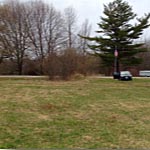Finding or Building a Pocket Neighborhood: Land Owners

Finding a Developer
As we mentioned above, Ross Chapin Architects is not a developer. We take the lead the design and planning, but building a pocket neighborhood requires the expertise of progressive builder.
For leads on locating developers in your area, you might start by asking your city planner. They are not supposed to recommend any one over another, but they may be willing to give you a list and suggestions. Another lead is to Google “smart growth + (your city)” and contact the people or organizations that come up. Finally, check out to find your local chapter of The Congress for the New Urbanism is a national organization that fosters vibrant communities. Check out their directory for local chapters and inquire about contacts. Your city may also have a green-building association to contact.
Designing a Site Plan
Typically, Ross Chapin Architects works with a developer on the concept design and planning, but if your site appears to have potential for a pocket neighborhood, we could design a plan for you to use to entice an appropriate developer. We would start by examining the zoning codes and speaking with your planning official. You will need to hire a surveyor to provide a detailed survey with property lines, grades, utilities and trees. Then we would design a concept site plan for city review. After a preliminary review and approval, you would reach out to potential developers.
|